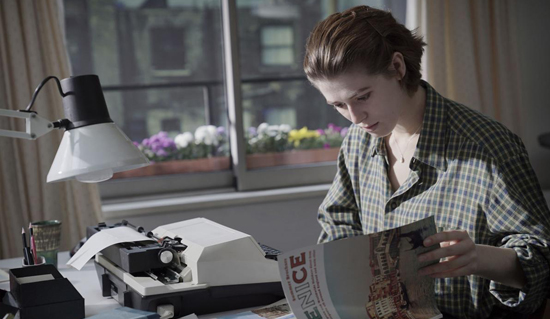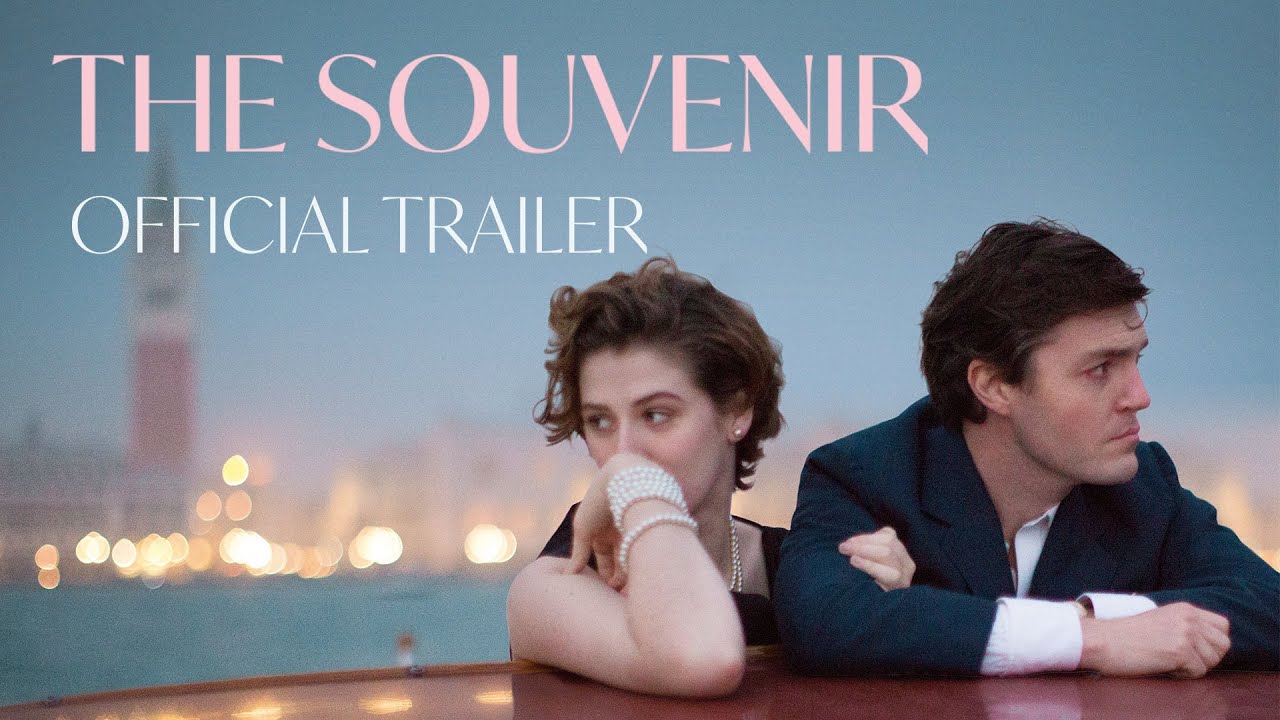In 2008, when Joanna Hogg was nearly 50 years old, the British filmmaker won praise as a “breakthrough” artist and “most promising newcomer.” She was lauded as the herald of a “new” British realism, promptly situated within a growing tradition of European art cinema, and even compared to old masters like Éric Rohmer and Yasujirō Ozu.
This success followed an already rich career. Soon after leaving school, Hogg met Derek Jarman at a café in Soho, London, and asked to be involved in his next film. Jarman looked over her portfolio, which was, at the time, filled only with photography and drawings, and recommended that—rather than helping with his films—Hogg should be making films of her own. To this end, Jarman offered his mentorship and, perhaps more importantly, a Super 8 Nizo camera. With it, Hogg set about producing a number of short experimental films, eventually earning herself a place at the National Film and Television School. Her 1986 graduation project, Caprice, starred a then-unknown Tilda Swinton who, that same year, would make her feature debut in Jarman’s Caravaggio—the same film that Hogg had asked to be a part of.
Hogg began her professional career directing music videos. This offered steady work, and eventually grew into directing for television (predominantly soap operas, including a 2003 EastEnders spinoff). Though thankful to be working at all, Hogg nevertheless felt dissatisfied, and longed to tell stories of her own. What followed—after the catalysing double-tragedy of her father’s death and learning that she and her husband, Nick Turvey, would be unable to have children—was Unrelated, Hogg’s first feature film and the advent of all that aforementioned praise.
But with her latest film, The Souvenir, Joanna Hogg has arrived anew. Already labelled as one of the best films of the year by The New York Times, and having graced the covers of Film Comment and Little White Lies, there’s a prevailing consensus that the film represents a maturation for the filmmaker. Though it may seem a strange comparison, The Souvenir—in terms of critical mythologies—is having similar career consequences to Wong Kar-wai’s In the Mood for Love. No longer a mere practitioner of “world cinema,” nor a proponent of a “new wave” or “new realism,” each filmmaker escapes such stylistic labels with a turn to the more personal—a film made in memoriam. Woven from the fabric of memory, both The Souvenir and In the Mood for Love offer up a sensorium of nostalgia, a world replete with life-lasting pangs and wants, where the very real history of each moment exists only on the periphery.
As the semi autobiographical story of her young adult life, The Souvenir is imbricated with Hogg’s memories, both real and reconstructed. The film opens with a montage of her photography, black and white images of Sunderland where Hogg—like her self-insert protagonist Julie (Honor Swinton Byrne)—planned to make her first film. The letters that Julie receives from her heroin-addicted lover, Anthony (Tom Burke), come from his real-world equivalent. And though the viewer sees glimpses of Hogg’s old Super 8 imagery, The Souvenir is further populated with newly shot footage: Anthony and Julie saying goodbye for the first time, or the two holding hands at the opera. These fleeting cutaways mark the passing of time as flashbulb memories, intensified moments of infinite importance, lending the film an authenticity unmatched by Hogg’s earlier, more explicitly realist films.
“We can all be sincere, we can all be authentic, but what’s it all for?”
Anthony asks this of Julie while helping her apply to film school. It’s one of the many vague, contradictory lectures he offers during their relationship, and one that Julie isn’t quite sure how to unpack. Mostly it compounds her insecurity. Questions of reality and its representation are constantly levelled at Julie, and it becomes a way for Hogg to grapple with her own sensibility as a filmmaker—a conversation with her past-self, framed as a two-way mirror.
In looking back at Hogg’s first film, Unrelated, from the elevated plane of The Souvenir, certain constants stand out. Hogg favors stillness and long takes; She enjoys holding on a single room, reframing the space through the use of doorways and windows, allowing characters to come and go as they please. And her dialogue is always naturalistic, often working from a “script” more literary and descriptive, developed in collaboration with her actors (for The Souvenir, Burke was given the screenplay a month before shooting; Swinton-Byrne received each scene the day-of). But what rises to the fore in collating these two films is the difference between realism and sincerity, of a world observed and a world divulged. Whether or not Anthony functions as a mouthpiece for Hogg’s own views, he nevertheless comments in favour of The Souvenir’s stylistic shift: “We don’t want to see life played out as is, we want to see life as it is experienced within this soft machine.”
This is not to say that filmmaking—in terms of objectivity, reality, truth, and so forth—could exist within such a simple dichotomy. Some critics have struggled with Hogg’s films because she employs the realist mode to portray upper-middle-class experiences. When placed alongside the work of Ken Loach or Mike Leigh, bastions of the underclass for decades now, these stories seem frivolous. Indeed, filmic realism has traditionally been recognized as a revelatory force—a noble pursuit necessarily burgeoning in postwar Europe. In this way, the objective is not simply to observe, nor describe what has been observed, but to expose the mechanisms that explain the circumstances that are the study of the film.
What this refers to is better understood as the “social” half of “social realism”—the genre or tradition to which Loach, Leigh, and so many other British filmmakers belong—and it calls to question the validity of Hogg’s chosen subjects. (In Unrelated, for example, this points to the group of family and friends on holiday in Tuscany, where most conversations revolve around which drinking game will be played next). Writer Nick Roddick, who passed away earlier this year, felt that Hogg’s portrayal of the people to which she belongs was only natural; that she “shows no sign of apologizing about the middle-classness of her characters and, as a result, has hit a kind of motherlode.” That motherlode of middle-classness refers to the particularity of Hogg’s filmmaking, “the tiny nuances of gesture and oblique conversation by which we, the British middle class, negotiate our way through life.”
Roddick’s use of “we” here would foreshadow Anthony’s use of “me”, when trying to dissuade Julie from making a film about Sunderland’s dying working-class. “Why are they more real than me?” he asks. Julie’s answer, like the one echoed by Hogg over a decade of interviews, is decidedly neutral: “I think we’re all equal in that. I think we’re all as real as each other.”
In the past Hogg has stated, in various forms, that she’s “not interested in depicting a certain class” because she doesn’t “see it from that outside viewpoint.” It would be easy to read this attitude as a cynical attempt at apoliticism—Hogg hoping to absolve herself from any social responsibility—but the persistent humanism of Hogg’s films undoes any class-based criticism, and challenges the pre-existing belief that works of realism must deliver some kind of socio-political punch. There is no underclass here in need of saving, no malicious mechanism at work. Only people and their problems, which are as valid as the viewer warrants them to be.
Prior to The Souvenir, Hogg had only achieved this by way of isolation, with Exhibition, Archipelago, and Unrelated all confined to small, homogenous herds. The lattermost film figures this best in its use of the holiday—a group trip to Tuscany offering its participants (and audience) an explicit departure from the “social.” Its protagonist, Anna (Kathryn Worth), is taking a break from her marriage to grieve—though she still calls her husband from time to time while away on morning runs. Anna’s many miseries remain a mystery to us until late in the film, but are otherwise projected onto Oakley (Tom Hiddleston), an obnoxious-but-charming young man who serves as the de facto leader of the kids’ table (though all basically adults, the holiday is nevertheless broken up into parents and their children, with Anna lost in the threshold). Oakley’s appeal is twofold for Anna, and follows an Oedipal logic: he is both the child she might have raised if she hadn’t waited too long to have children, and a hypothetical partner of the past—an attempt to reclaim her own fleeted youth (Tuscany, fittingly, is a place frozen in time).
By removing her characters from their social sphere, Hogg reduces the film to a purely relational, individual aesthetic. This is not so simple for Julie and The Souvenir, where most characters—including family and friends—feel compelled to comment on class and privilege. (Julie doesn’t pay rent, for example—she collects it.) Hogg’s antidote here, for any pending or pent-up audience resentment, lies in Julie’s naiveté. Though she may occasionally bleat at her mother for more money, Julie is never made especially evil or contemptible; we’re far more willing to forgive her misdoings than Oakley’s (Julie’s equal in age and means). There’s something to Julie’s fragility that endears us to her, that invites protection. We feel a tinge of guilt when, after so much hardship, she turns to face the camera at the film’s close.
That guilt extends also to Joanna Hogg. This is, after all, her life on display—a work of scrutiny and self-abasement. It would feel absurd to question her validity as a filmmaker when all of Julie’s forthcoming criticisms have just been prefigured onscreen (for fans of Hogg, the overlap of once-was and will-become is one of the film’s most heartbreaking tensions). With the filmmaker as subject, Hogg’s humanity is laid bare, her insecurities borne like scar tissue, and The Souvenir becomes a work of absolution—an introspective confessional that leaves its audience apologizing without reason, overwhelmed by a sense of wanting we don’t fully understand. But when the credits roll, we come to realize that Julie and Hogg will both be fine: the filmmaker announces—before knowing the new level of success that would befall her—The Souvenir: Part II, coming soon.
The Souvenir is in UK cinemas now



